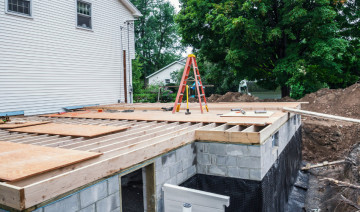Your Comprehensive Guide to Planning a Home Addition

Expanding your home with an addition is an exciting venture that can enhance your living space, increase your property value, and accommodate your growing needs. However, the process requires careful planning and execution to ensure a smooth and successful project. Whether you’re adding a new bedroom, a sunroom, or expanding your kitchen, here’s a comprehensive guide to help you navigate through planning your home addition.
1. Define Your Goals
Start by clearly defining the purpose of your home addition. Consider questions such as:
- Why do you need the additional space?
- What function will the new space serve?
- How will it integrate with the existing structure?
Having a clear vision will guide your decisions throughout the project and ensure that the final result meets your needs.
2. Set a Budget
Determine how much you’re willing to spend on your home addition. Consider all potential expenses, including:
- Construction costs
- Permits and fees
- Architectural and design services
- Furnishings and finishes
Include a contingency fund for unexpected costs. It’s also wise to get estimates from multiple contractors to ensure your budget is realistic.
3. Check Local Zoning Laws and Permits
Before you proceed, research local zoning laws and building codes. Some areas have restrictions on:
- The size of additions
- Setbacks from property lines
- Height limits
You’ll need to obtain the necessary permits before construction begins. Consult with your local planning department or a professional to ensure compliance with all regulations.
4. Hire Professionals
Assembling the right team is crucial for a successful project. Consider hiring:
- An architect to design the addition and ensure it blends seamlessly with your existing home
- A structural engineer to assess and plan for any structural changes
- A general contractor to manage the construction process
Verify their credentials, check references, and review their previous work to ensure you’re hiring reputable professionals.
5. Design Your Addition
Work closely with your architect to create a design that meets your needs and complements your home’s style. Consider:
- The layout and flow of the new space
- Lighting and ventilation
- Materials and finishes
Use design software or 3D renderings to visualize the addition and make adjustments before construction begins.
6. Plan for Disruption
A home addition can disrupt your daily life, so it’s essential to plan for it. Consider:
- How the construction will affect your living space
- Whether you’ll need to relocate temporarily
- How to protect your home from dust and debris
Communicate regularly with your contractor to stay informed about the project’s progress and address any issues promptly.
7. Monitor the Construction Process
Stay involved throughout the construction phase to ensure the project stays on track. Regularly:
- Visit the site to monitor progress
- Communicate with your contractor about any concerns
- Review and approve any changes to the original plan
Maintaining open lines of communication will help prevent misunderstandings and keep the project moving smoothly.
8. Final Inspections and Finishing Touches
Once construction is complete, conduct a final walkthrough with your contractor to ensure everything meets your expectations. Check for:
- Quality of workmanship
- Functionality of new systems (electrical, plumbing, HVAC)
- Any outstanding issues that need to be addressed
Obtain all necessary certificates of completion and ensure all permits are closed. Finally, add your personal touches to the new space with furnishings and decor.
Conclusion
Planning a home addition is a significant undertaking that requires careful preparation, the right team, and ongoing communication. By following these steps, you can ensure a successful project that enhances your home’s functionality and value. Ready to start your home addition journey? Contact us for expert advice, quality materials, and trusted contractor referrals to help you every step of the way. Let’s turn your vision into reality!

Comments